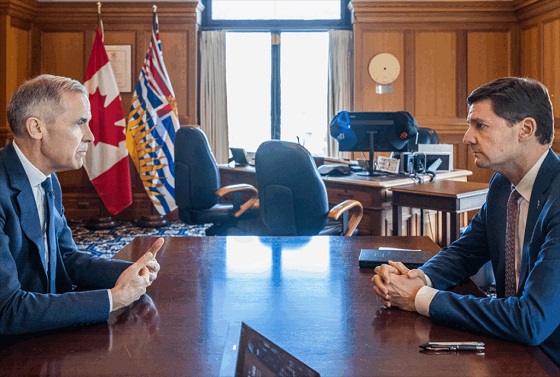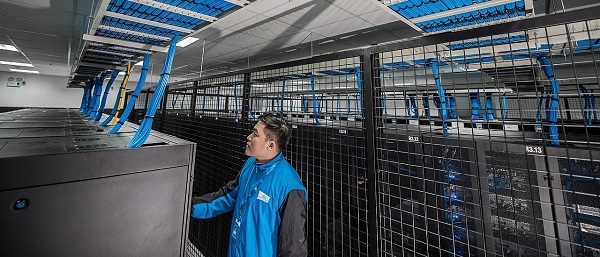Energy
Mark Ruffalo, Hollywood filmmakers wrong about Canadian energy, RBC

Hollywood actors Mark Ruffalo, Rachel McAdams and Joaquin Phoenix are pressuring TIFF to remove RBC as a sponsor because of the bank’s support for Canadian oil and gas. Getty Images photos
From the Canadian Energy Centre
By Deborah JaremkoThey say RBC is not a ‘worthy source of financing’ for Canadian film because of its ongoing support for Canadian oil and gas. They are wrong
A group of Hollywood filmmakers including Mark Ruffalo, Joaquin Phoenix and Rachel McAdams is calling on the Toronto International Film Festival (TIFF) to drop RBC as its main sponsor.
They say RBC is not a “worthy source of financing” for Canadian film because of its ongoing support for Canadian oil and gas. They claim RBC is fueling climate change and disrespecting Indigenous rights.
They are wrong.
RBC is helping fund climate solutions while enabling Indigenous self-determination and prosperity. And Indigenous communities do not want Hollywood to speak for them.
Here are the facts.
Fact: RBC primarily funds Canadian oil and gas, and the world needs more Canadian oil and gas – not less
The world’s growing population needs access to reliable, affordable, responsibly produced energy. And a lot more of it.
According to the United Nations, last November the global population reached 8 billion people, just over a decade after hitting the landmark 7 billion in 2011. Driven by India and China, the world’s population is projected to reach 8.5 billion in 2030 and 9.7 billion 2050.
All those people need energy. Many don’t even have it today, with about 775 million without access to electricity last year, according to the International Energy Agency (IEA).
Even with accelerating investment in low carbon energy resources, the world’s consumption of oil, gas and coal is as high or higher than it has ever been, with both oil and coal demand reaching new records this year, the IEA reports.
The agency projects the world’s total energy consumption – which increased by 15 per cent over the last decade – will increase by a further 24 per cent by 2050.
On the world’s current trajectory, the IEA says oil, gas and coal will account for 62 per cent of world energy supply in 2050, compared to 78 per cent in 2021.
As IEA executive director Fatih Birol said last year, “We will still need oil and gas for years to come… I prefer that oil is produced by countries like Canada who want to reduce the emissions of oil and gas.”
Canada has been a cornerstone of global energy markets and a reliable partner for years, he said.
Fact: Coastal GasLink will help reduce emissions
The Hollywood activists take issue with RBC’s funding of the Coastal GasLink pipeline. This is nonsensical because the project can help reduce emissions in Asia. It also has the support of and is benefiting Indigenous communities.
One of the fastest and most effective ways to reduce emissions is to switch from coal-fired power to power generated from natural gas, traded globally as LNG.
Consider that between 2005 and 2019, emissions from the U.S power sector dropped by 32 per cent because of coal-to-gas switching, according to the U.S. Energy Information Administration.
The LNG Canada project – supplied with Canadian natural gas via Coastal GasLink – will have among the world’s lowest emissions intensity, at 0.15 per cent CO2 per tonne compared to the global average of 0.35 per cent CO2 per tonne, according to Oxford Energy Institute.
Natural gas from LNG Canada alone could reduce emissions in Asia by up to 90 million tonnes annually, or the equivalent of shutting down up to 60 Asian coal plants, the project says. That’s also a reduction of more than the entire emissions of the province of British Columbia, which were 64 million tonnes in 2022.
Expanding Canada’s LNG exports to Asia could reduce emissions by 188 million tonnes per year, or the annual equivalent of taking all internal combustion engine vehicles off Canadian roads, according to a 2022 study by Wood Mackenzie.
“It is a disservice to take the choice of Canadian LNG away from those that need it,” Billy Morin, former chief of the Enoch Cree Nation, said earlier this year.
Fact: Coastal GasLink benefits Indigenous communities
The Coastal GasLink pipeline is enabling shared prosperity between Indigenous communities and Canada’s energy industry.
Not only will it connect to the LNG Canada terminal on the traditional lands of the Haisla Nation – where the project has been transformational for the community, according to Chief Councillor Crystal Smith – but it will also provide natural gas for the proposed Cedar LNG project, in which the Haisla Nation is 50 per cent owner.
“Cedar is not only important from a Haisla perspective, [but from] a global perspective,” Smith says.
“Our territory is not in a bubble and protected from what is happening in Asia and India with coal burning.”
Sixteen First Nations will become 10 per cent owners of the Coastal GasLink pipeline itself once it is completed.
And so far, LNG Canada and Coastal GasLink together have spent more than $5.7 billion with Indigenous-owned and local businesses.
“When there is foreign interference, especially from high-profile celebrities like Ruffalo, it sets us back. He does not think beyond the pipeline. He does not think beyond the cause of the day,” Indigenous policy analyst Melissa Mbarki wrote following a previous attack on Coastal GasLink by the actor.
“Over the long term, such actions serve to drive away investment and keep Indigenous communities in poverty. We are dealing with so many social issues, including high rates of suicide, incarceration and homelessness. Speaking on our behalf is not the answer if you fail to acknowledge the entire story.”
Fact: Indigenous communities speak with their own voices
Ruffalo is a prominent activist against the Coastal GasLink pipeline, often spreading misinformation about the project’s relationship with Indigenous communities. But they are fighting back.
“Hollywood celebrities from outside of Canada are actively campaigning against the Coastal GasLink project, claiming Indigenous People do not support it. However, 20 elected First Nations governments along the route do support it,” the Indigenous Resource Network said in a statement last year.
“Hollywood celebrities are standing in the way of us being able to make our own decisions. Their main goal is to push their agenda and use us as talking points; ultimately, communities are left to pick up the pieces.
“Although their intentions may be to help Indigenous people in Canada, this can be best done by allowing our people to use their own voices. We are able to decide for ourselves what is best for ourselves and our communities.”
Fact: The film industry has its own emissions to deal with
Rather than campaign against Canadian energy projects that can help reduce emissions and foster prosperity for Indigenous communities, Hollywood film makers could be better served addressing the emissions in their own backyard.
A 2020 study by the British Film Institute analyzing the emissions associated with producing movies in the U.S. and U.K. found that films with a budget of $70 million or over generate an average 2,840 tonnes of CO2 pollution.
Air travel alone to support a movie production of this scale generates equivalent emissions of flying one way from London to New York 150 times, BFI said.
Energy
The Carney Government is Hijacking the Phase “Energy Superpower” to Advance Their Agenda
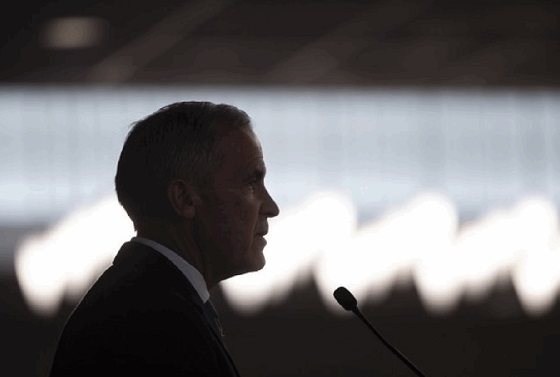
From Energy Now
By Jim Warren
Lately, the spin doctors in the prime minister’s office (PMO) have been hijacking perfectly good words and altering their meaning in the service of the Liberal agenda.
For budgetary purposes “operating expenses” have become “investments.” Similarly, the term “energy superpower” no longer means what people typically think it means. Back in the day when the concept “energy superpower” was popularized, it was used to describe oil rich countries like Saudi Arabia, the other Gulf states and OPEC members.
Those countries are home to the oil sheiks—the leaders of OPEC who capitalized on their dominant position in global energy markets to affect the global oil supply and prices. They also used their control over oil as a source of leverage in the realm of geopolitics.
Wikipedia, the font of knowledge for lazy columnists, describes the traditional meaning of energy superpower as follows “…a country that supplies large amounts of energy resources (crude oil, natural gas, coal, etc.) to a significant number of other countries – and therefore has the potential to influence world markets for political or economic gains. Energy superpower status might be exercised, for example, by significantly influencing the price on global markets or by withholding supplies.”
During the 2025 election campaign Mark Carney’s notion of what constitutes an energy superpower was aligned with the conventional definition. A CTV news report the day after the federal election reminded viewers that on “April 8 at a campaign stop in Calgary, Carney pledged to position Canada as a ‘world energy superpower,’ calling for new [oil] pipelines, including one to Eastern Canada.”
By September of 2025, Carney and his Energy Minister Timothy Hodgson had obviously adopted a new definition. They still boast about making Canada an energy superpower but no longer referred to oil production and new export pipelines as things integral to that goal.
But wait, on Friday November 7 the prime minister told attendees at Canadian Club event in Toronto not to worry the long sought pipeline “was going to happen.”
Pardon me if I’m not convinced. Over the three months prior to Friday the Liberals had left us to assume becoming an energy superpower could happen without increasing oil production and exports.
We are still left with a riddle—what do the Carney Liberals actually mean when they promise Canadians we will achieve “energy superpower” status if crude oil, Canada’s single most valuable export commodity is no longer one of the key components of the strategy to get us there?
Actually, Canada was well on its way to achieving the status of a world class energy superpower until the Trudeau Liberals assumed office. Our budding superpower ambitions were foreclosed on by the Liberals’ growth killing BANANA* legislation which thwarted efforts to increase oil production and exports. The blue-eyed sheiks of Western Canada have been handcuffed and denounced as authors of the upcoming climate apocalypse.
(*BANANA – Build Absolutely Nothing Anywhere Near Anything)
The communications wizards in the PMO abandoned the traditional definition without actually telling anyone they were doing so. They have quietly adopted a fossil fuel-free version of what it means to be a supremely powerful purveyor of energy, but haven’t explained what that entails.
If they chose to be honest with Canadians they would say what they really mean is “green energy superpower.” But if they came clean, it would probably trigger a national unity crisis. Better to leave things loose until the budget has been approved.
Despite wishful thinking in Ottawa, Canada is a long way from winning the race for medals in the field of clean, green energy production. But, we’re so far behind the leaders that Mark Carney thinks he’s first.
Powering the dream of a net zero world will presumably rely heavily on the approximately 28 critical minerals and rare earths required for wind turbines, advanced electric motors and batteries. Canada makes it to the medals podium for just three of the 28. According to a 2024 report published by Our World in Data, Canada is in third place globally for uranium and aluminum production, and cobalt refining.
Australia, a Western-style capitalist democracy which punches close to our weight by many economic measures is far ahead of Canada when it comes to critical minerals production and proven reserves. China is in a class of its own—clearly the world leader in rare earth production and proven reserves, miles ahead of the rest of the world. When it comes to mining and refining of critical minerals Canada has a lot of catching up to do.
Canada is similarly a long way from superpower status when it comes to the manufacturing of polysilicon, the compound required to produce solar electricity, and wind turbines.
Canada does not have any commercial level producers of polysilicon. China has several firms that manufacture it, one of which GCL-Poly has a 22% share of the global market. Polysilicon is also produced by firms in the US, South Korea, Germany, Japan, Norway and Qatar. There once was a company in Canada which imported polysilicon from China which it then used to make solar panels. Apparently it has moved its operations to the US.
Globally, there are approximately 39 manufacturers of large, grid-scale wind turbines located in some 14 different countries. The world’s largest manufacturer, Vestas, is headquartered in Denmark. No large wind turbines are manufactured in Canada. Our role is limited to installation, operations and maintenance.
And, given recent events it is unlikely Canada is going to become a global superpower for the manufacturing of electric vehicles any time soon.
Canada is in third place globally for the production of hydroelectricity, although our 364.2 terawatt-hours (TWH) of electricity we generate pales in comparison with China’s 4,183.4 TWH of hydroelectric production. While the environmentally virtuous may find grounds for bragging rights with respect to our country’s hydro production, it means little in terms of leverage in a global market place. Sure Canadian producers sell electricity into the US power grid, but they are unable to sell it anywhere else. Ocean spanning transmission lines won’t work, too much power is lost when sending power long distances and selling electricity stored in batteries is not commercially viable—the batteries required are simply too big and insanely expensive.
For the foreseeable future the only way Canada can claim superpower status as a producer of clean energy is if the definition is radically changed. Apparently being identified as a clean green energy superpower can now mean that a country makes use of an impressive level of the stuff—the criteria required to be deemed an “impressive producer” is apparently one of those post-modern woke notions whereby each country is entitled to its own green energy truth.
This echoes the casual way social media mavens award superpower status to supposedly inspiring personal characteristics – my superpower is multi-tasking, or baking sourdough bread, or being an avid recycler. It makes about as much sense as claiming you are a hero because you held a guy’s mitts so he could dial 911 to report an accident.
It is sad, but true, that Canada was well on its way to energy superpower status prior to the federal Liberals coming to office in 2015. Crude oil was then and remains Canada’s single most valuable export product. We currently export approximately 4.2 million barrels per day which was worth 153 billion USD in 2024. Back in 2013 and early 2014 when world prices were good the oil industry was generating as much as three to four percent of Canada’s GDP.
Clearly Canada could be doing a whole lot better economically if the federal government got behind the oil industry and removed the barriers to growth in production and exports. Danielle Smith has been trying to alert the Canadian government and public to the reality that completion of a single million barrels per day oil pipeline from Alberta to Prince Rupert could contribute $20 to $30 billion in new revenues to Canada’s GDP, depending on world prices.
That would be a giant leap forward on the path to being a real energy superpower.
Alberta
‘Weird and wonderful’ wells are boosting oil production in Alberta and Saskatchewan

From the Canadian Energy Centre
Multilateral designs lift more energy with a smaller environmental footprint
A “weird and wonderful” drilling innovation in Alberta is helping producers tap more oil and gas at lower cost and with less environmental impact.
With names like fishbone, fan, comb-over and stingray, “multilateral” wells turn a single wellbore from the surface into multiple horizontal legs underground.
“They do look spectacular, and they are making quite a bit of money for small companies, so there’s a lot of interest from investors,” said Calin Dragoie, vice-president of geoscience with Calgary-based Chinook Consulting Services.
Dragoie, who has extensively studied the use of multilateral wells, said the technology takes horizontal drilling — which itself revolutionized oil and gas production — to the next level.
“It’s something that was not invented in Canada, but was perfected here. And it’s something that I think in the next few years will be exported as a technology to other parts of the world,” he said.
Dragoie’s research found that in 2015 less than 10 per cent of metres drilled in Western Canada came from multilateral wells. By last year, that share had climbed to nearly 60 per cent.
Royalty incentives in Alberta have accelerated the trend, and Saskatchewan has introduced similar policy.
Multilaterals first emerged alongside horizontal drilling in the late 1990s and early 2000s, Dragoie said. But today’s multilaterals are longer, more complex and more productive.
The main play is in Alberta’s Marten Hills region, where producers are using multilaterals to produce shallow heavy oil.
Today’s average multilateral has about 7.5 horizontal legs from a single surface location, up from four or six just a few years ago, Dragoie said.
One record-setting well in Alberta drilled by Tamarack Valley Energy in 2023 features 11 legs stretching two miles each, for a total subsurface reach of 33 kilometres — the longest well in Canada.
By accessing large volumes of oil and gas from a single surface pad, multilaterals reduce land impact by a factor of five to ten compared to conventional wells, he said.
The designs save money by skipping casing strings and cement in each leg, and production is amplified as a result of increased reservoir contact.
Here are examples of multilateral well design. Images courtesy Chinook Consulting Services.
Parallel
Fishbone
Fan
Waffle
Stingray
Frankenwells
-

 Crime14 hours ago
Crime14 hours ago‘Modern-Day Escobar’: U.S. Says Former Canadian Olympian Ran Cocaine Pipeline with Cartel Protection and a Corrupt Toronto Lawyer
-

 Health2 days ago
Health2 days agoNEW STUDY: Infant Vaccine “Intensity” Strongly Predicts Autism Rates Worldwide
-
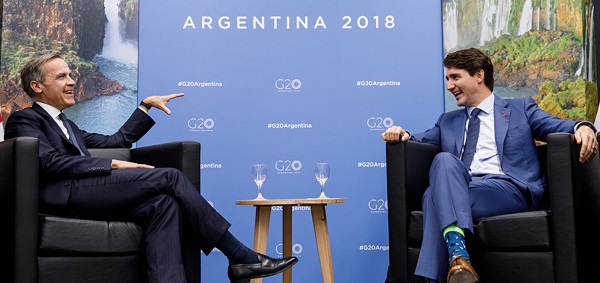
 Carbon Tax2 days ago
Carbon Tax2 days agoCarney fails to undo Trudeau’s devastating energy policies
-
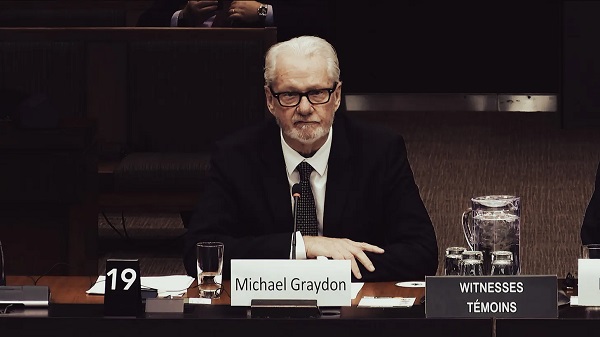
 Business1 day ago
Business1 day agoNearly One-Quarter of Consumer-Goods Firms Preparing to Exit Canada, Industry CEO Warns Parliament
-

 Daily Caller1 day ago
Daily Caller1 day agoDemocrats Explicitly Tell Spy Agencies, Military To Disobey Trump
-

 Addictions2 days ago
Addictions2 days agoActivists Claim Dealers Can Fix Canada’s Drug Problem
-

 Indigenous1 day ago
Indigenous1 day agoTop constitutional lawyer slams Indigenous land ruling as threat to Canadian property rights
-

 Alberta2 days ago
Alberta2 days agoEdmonton and Red Deer to Host 2027 IIHF World Junior Hockey Championship








